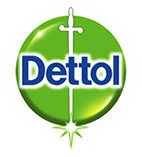
General Well-Being and Safety During The First Year
- Vaccination: Ensure that your baby has the necessary vaccinations at the appropriate times
- Handwashing: Anyone who touches your baby must wash hands thoroughly first, including young children who play with him/her.
- Germ protection on surfaces: It is recommended that you disinfect those areas where there can be lots of germs, such as changing mats. Always rinse surfaces that baby will come in contact with.
- Toys: Read labels to make sure the toy is appropriate for your child's age. Avoid buying toys that may have small parts or pose a choking hazard. Remember, this labelling is related to safety/choking hazards, not developmental abilities.
Life Stage: 0 to 3 Months
Well-being and Safety
It's important to keep your baby's safety in mind at all times, both at home and when visiting.
- Cribs and cots: ALWAYS put baby to sleep on his/her back to avoid the risk of SIDS (Sudden Infant Death Syndrome).
- Nappy changing tables: A changing table should have at a railing on all sides.
- Never leave the baby unattended, even for a moment. Even a newborn is able to roll. Be especially alert when changing nappies and bathing your baby.
- Never shake your newborn baby. Newborn babies have very weak neck muscles that cannot support their heads. Shaking can damage his/her brain and delay normal development.
Life Stage: 4 to 6 Months
Well-Being and Safety
Now that your baby is grasping at everything within reach and approaching the crawling stage, ongoing baby-proofing throughout your home is important, along with continuing general safety habits.
- Cribs and cots: Remove mobiles and activity gyms by five months of age. These are strangulation hazards for children who can get onto their hands and knees.
- High chair: Always use the safety straps on your baby's high chair and other seats. Wipe the high chair clean after each use, but also plan to give it a regular thorough clean, including removing any loose objects and detachable padding or sections. Use a detergent that is intended for baby products and furniture.
- Electrical hazards: Relocate any appliances with cords that baby could grab, including small appliances like hair dryers and phone chargers. Cover all exposed power sockets with safety caps.
- Cleaning products: Store cleaning products in a locked closet or cabinet. Leave them in their original containers and never remove product labels, as first aid instructions can vary.

Life Stage: 7 to 9 Months
Well-Being and Safety
Now that your baby is starting to crawl, or already crawling, it is important to keep him or her safe from potential hazards. It is surprising how quickly he or she can locate and grasp an unsafe item, or topple over or fall!
- Never leave the baby unattended. Your baby will be grasping for everything within reach.
- Electrical hazards: Remove/relocate any appliances with cords that baby could grab – including small appliances like hair dryers and phone chargers. Cover all exposed power sockets with safety caps.
- Bathing and changing: NEVER leave the baby alone in the bath.
- Feeding: As you continue to introduce new foods to your baby, talk to your child's doctor about any food allergies that run in your family.
- Oral Care: Do not put your baby to sleep with a bottle that contains anything but water (or let your baby fall asleep while breastfeeding). This can cause a painful disease that leads to decay in teeth that haven't come in yet. Take your baby for a dental check-up once the first tooth has appeared (erupted), and ask about fluoride supplements if your water isn't fluoridated. Try getting your baby to use a sipper cup, not a bottle.
- Cleaning products: Store cleaning products in a locked cupboard or cabinet, and keep them in their original containers with product labels. Product information, precautions, and first aid instructions vary according to the product's ingredients.
Life Stages: 10 to 12 Months
Well-Being and Safety
Continued baby proofing is critical now that you have a true ’explorer‘ in your home. In addition, continue to follow general good safety and cleanliness practices.
- Baby-proofing:
- Furniture:
- Bolt furniture to the wall if possible, to prevent it from toppling onto your child as he/she uses it for support.
- Cover all sharp corners and edges of furniture with soft material like foam pieces or cloth to soften the impact if your child bumps into them
- Stairs: Place baby gates at the top and bottom of all staircases.
- Windows: Lock and secure windows, and tie blind cords so they are out of reach. To prevent falls from windows, install window guards.
- Cabinets/products: Keep all adult-use products out of your child's reach. Put safety locks on all cabinets/drawers that hold insect sprays, cleaning products, and medications. Never remove product labels, because product information, precautions, and first aid instructions vary according to the product's ingredients. Keep your first aid kit stocked and easily accessible for you (not your child).
- Toilets/sinks/tubs:
- Install lid locks on toilet seats.
- Empty all sinks and tubs immediately after use.
- Cleaning buckets: Do not leave nappies soaking in an open bucket. Never leave water in a cleaning bucket. It is easy for a toddler to topple over into a sturdy cleaning bucket.
- Furniture:
- Bathing: Always supervise your child throughout bath time.
